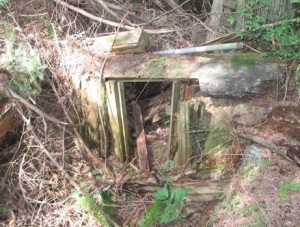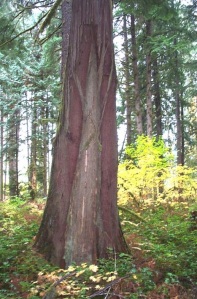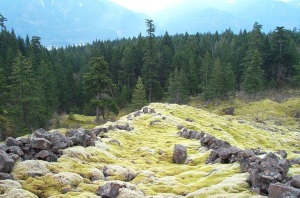
Woodlands provide a home for plants and animals, but they’re also home to the remains of past uses. Whether it’s an old well, homestead, railroad or a Tribal site, these cultural and historical resources on the land tell the story of our past – a past that makes it distinct from other places. Historic and cultural resources provide us with a tangible link to the people and events that shaped our shared history, communities and ourselves.
Most small landowners are willing to identify and protect cultural resources, but may be unaware of how to go about doing so. They may also lack the financial resources to develop an organized and consistent approach to identifying and protecting the sites.
Identification of cultural and historic resources, as well as a plan to protect them should be part of every Forest Stewardship Plan. Both DNR’s stewardship foresters and Washington State University (WSU) Extension foresters can assist private woodland owners with developing plans to protect these resources. Addressing these resources in your Stewardship Plan also helps ensure that your plan meets state and federal laws which protect our cultural and historic resources. To access the state’s searchable database, go to the Washington State Department of Archaeology and Historic Preservation or you can contact the office by phone at (360) 586-3065. For more information on the Forest Practices Rules and to find out which Tribes are in your area, contact the Forest Practices staff in your DNR Region Office.

One way of learning more is through online workshops and webinars. Two helpful resources are the proceedings of the Quinault Indian Nation and Washington Forest Protection Association sponsored 2012 Cultural Resources Workshop and the American Tree Farm Systems (ATFS) webinar Archeology in Your Woods.
To assist landowners and Tribes in resolving issues when cultural resources arise in the course of forest practices planning and permitting, the Forest Practices Board developed the Cultural Resources Protection and Management Plan (CRPMP). The CRPMP is a non-regulatory, multi-caucus, consensus approach to address protection and management of cultural resources on private and state managed forest lands in Washington. This approach is based on:
- Increasing communication and mutual respect between landowners and tribes,
- Developing cooperative processes to protect and manage cultural resources, and
- Providing educational opportunities to foster trust, commitment, and a common understanding of cultural resources issues relating to forest management.

The content and documents of the CRPMP were developed by the Timber/Fish/Wildlife (TFW) Cultural Resources Roundtable in response to a request from the Forest Practices Board to fulfill the cultural resources commitments in the Forests and Fish Report. The caucuses participating in developing the CRPMP were the Washington Forest Protection Association, Washington Farm Forestry Association, Department of Archaeology and Historic Preservation, DNR and individual Tribes. The plan “…is a “living” document open to updates and changes to reflect progress, completion of tasks and changes in priorities and direction of the CRPMP.”
